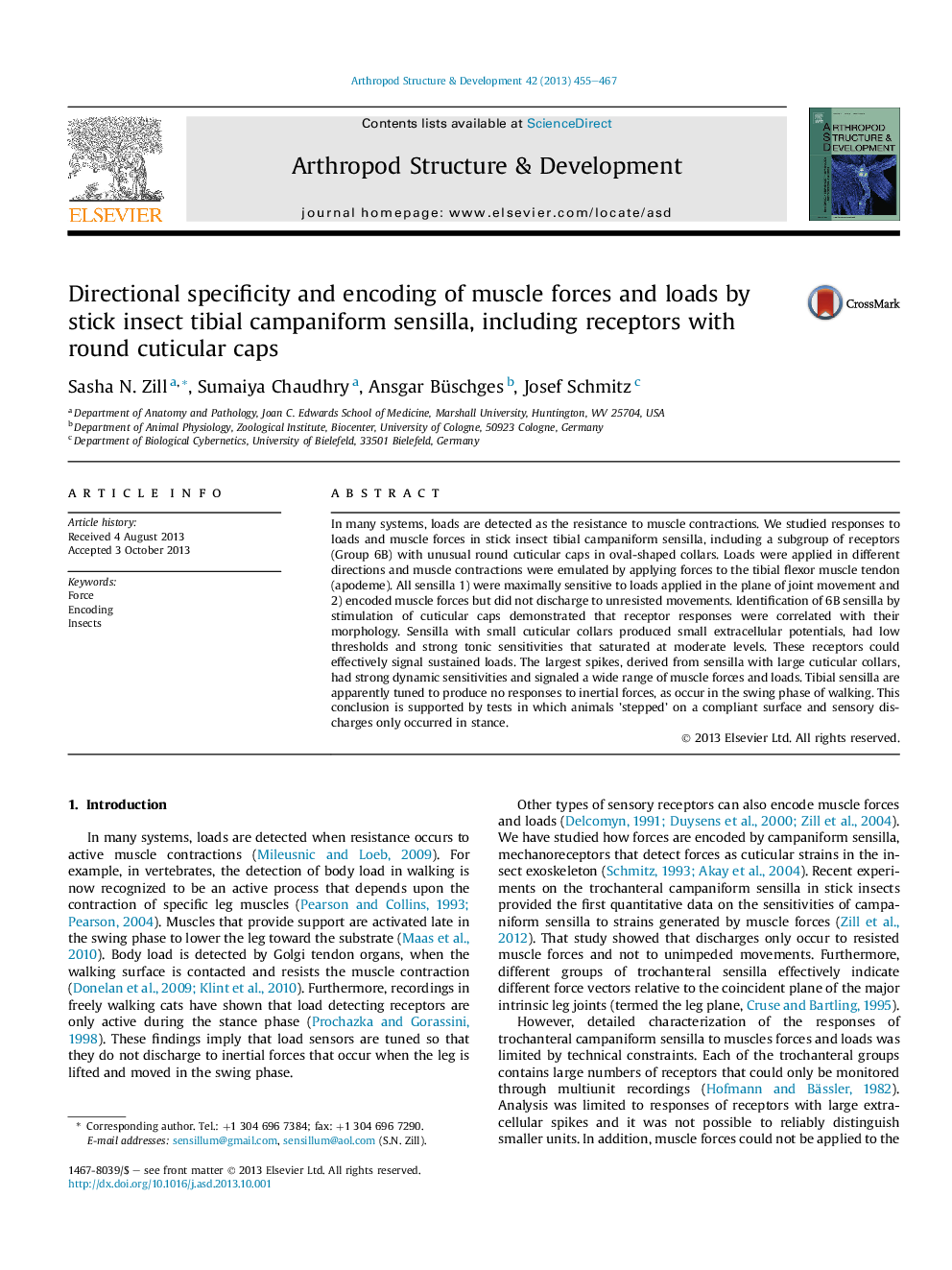| کد مقاله | کد نشریه | سال انتشار | مقاله انگلیسی | نسخه تمام متن |
|---|---|---|---|---|
| 2778546 | 1153143 | 2013 | 13 صفحه PDF | دانلود رایگان |

• Stick insect tibial campaniform sensilla effectively encode muscle forces and loads.
• A subgroup of receptors has unusual round cuticular caps in oval shaped collars.
• Those receptors can be classed according to their morphology and response properties.
• All tibial sensilla encode resisted muscle forces but not unresisted movements.
• The receptors are apparently tuned so that they do not encode inertial forces.
In many systems, loads are detected as the resistance to muscle contractions. We studied responses to loads and muscle forces in stick insect tibial campaniform sensilla, including a subgroup of receptors (Group 6B) with unusual round cuticular caps in oval-shaped collars. Loads were applied in different directions and muscle contractions were emulated by applying forces to the tibial flexor muscle tendon (apodeme). All sensilla 1) were maximally sensitive to loads applied in the plane of joint movement and 2) encoded muscle forces but did not discharge to unresisted movements. Identification of 6B sensilla by stimulation of cuticular caps demonstrated that receptor responses were correlated with their morphology. Sensilla with small cuticular collars produced small extracellular potentials, had low thresholds and strong tonic sensitivities that saturated at moderate levels. These receptors could effectively signal sustained loads. The largest spikes, derived from sensilla with large cuticular collars, had strong dynamic sensitivities and signaled a wide range of muscle forces and loads. Tibial sensilla are apparently tuned to produce no responses to inertial forces, as occur in the swing phase of walking. This conclusion is supported by tests in which animals 'stepped' on a compliant surface and sensory discharges only occurred in stance.
Journal: Arthropod Structure & Development - Volume 42, Issue 6, November 2013, Pages 455–467